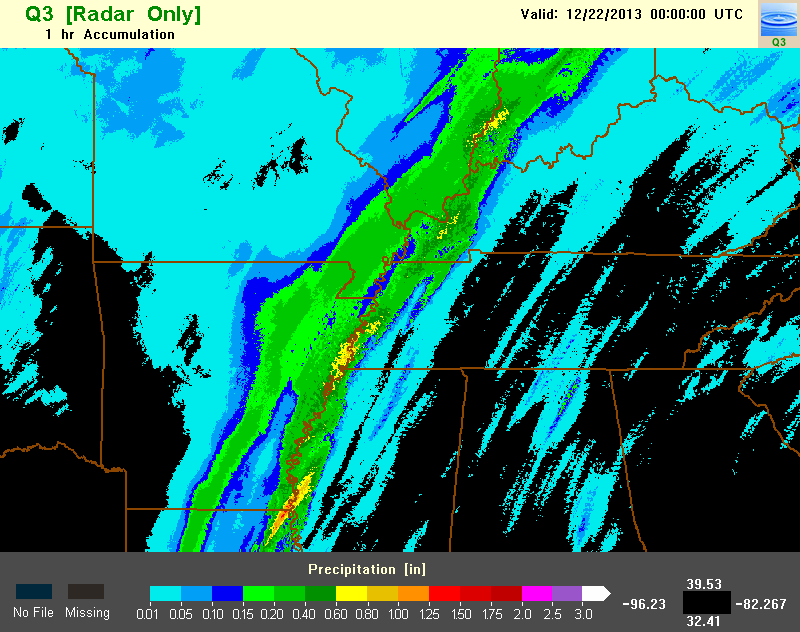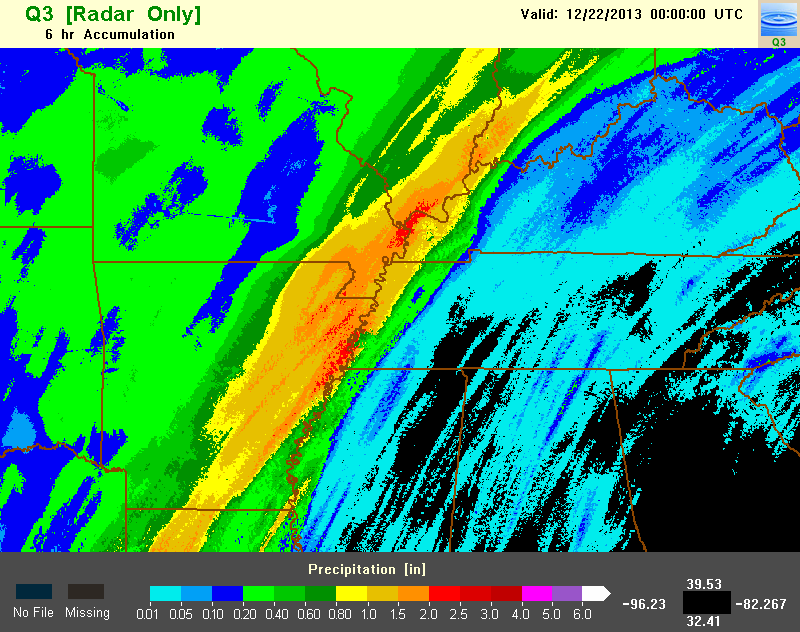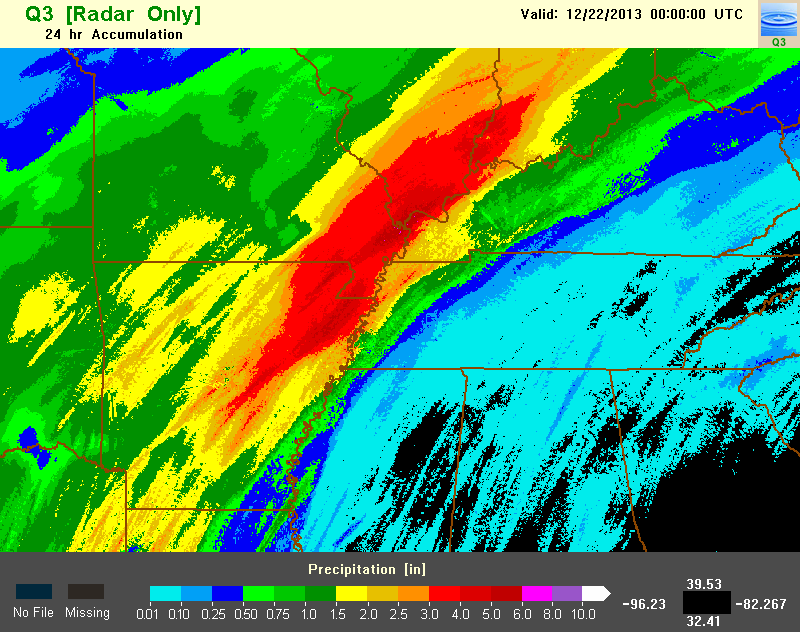QPE - Radar Only - Warning Decision Training Division (WDTD)
Navigation Links
Products Guide
QPE - Radar Only
Short Description
Precipitation accumulations derived from the summation of the Surface Precipitation Rate (SPR) product over a specified time interval.
Subproducts
- 1-, 3-, 6-, 12-, 24-, 48-, and 72-hour accumulations
Primary Users
NWS: WFO, RFC
Input Sources
Resolution
Spatial resolution: 1km x 1km
Temporal resolution: The 1-hour accumulation field is updated every 2 minutes. The 3-, 6-, 12-, 24-, 48-, and 72-hourly accumulations are updated hourly at the top of the hour. All products end at the indicated time.
Product Creation
The one-hour QPE – Radar Only product is an aggregation of the Surface Precipitation Rate (SPR) field, which is updated every 2 minutes. The SPR fields from the previous 60 minutes are summed to create the QPE – Radar Only field, with the product ending at the indicated time. For instance, a QPE – Radar Only field that is valid at 15:04Z is a summation of SPR fields from 14:04Z, 14:06Z, 14:08Z …to 15:04Z. Values at or below 0.01 inches are removed to reduce the areal coverage of what is most likely false light precipitation.
Longer accumulations (3-, 6-, 12-, 24-hourly) are summations of the one-hour fields, updated at the top of the hour. The 48- and 72-hour accumulations are summations of the 24-hour fields, updated daily at 12Z (on the SBN, but updated hourly online).
Technical Details
Latest update: MRMS Version 12.2
References
Zhang, J., K. Howard, S. Vasiloff, C. Langston, B. Kaney, Y. Qi, L. Tang, H. Grams, D. Kitzmiller, J. Levit, 2014: Initial Operating Capabilities of Quantitative Precipitation Estimation in the Multi-Radar Multi-Sensor System. 28th Conf. on Hydrology, Amer. Meteor. Soc.
Other MRMS product documentation: Surface Precipitation Rate






